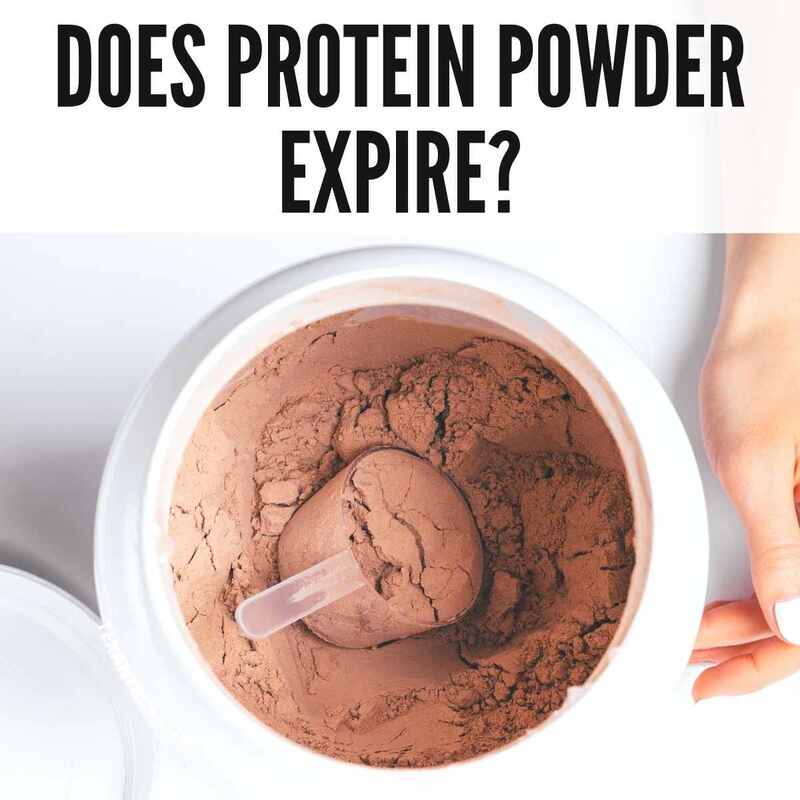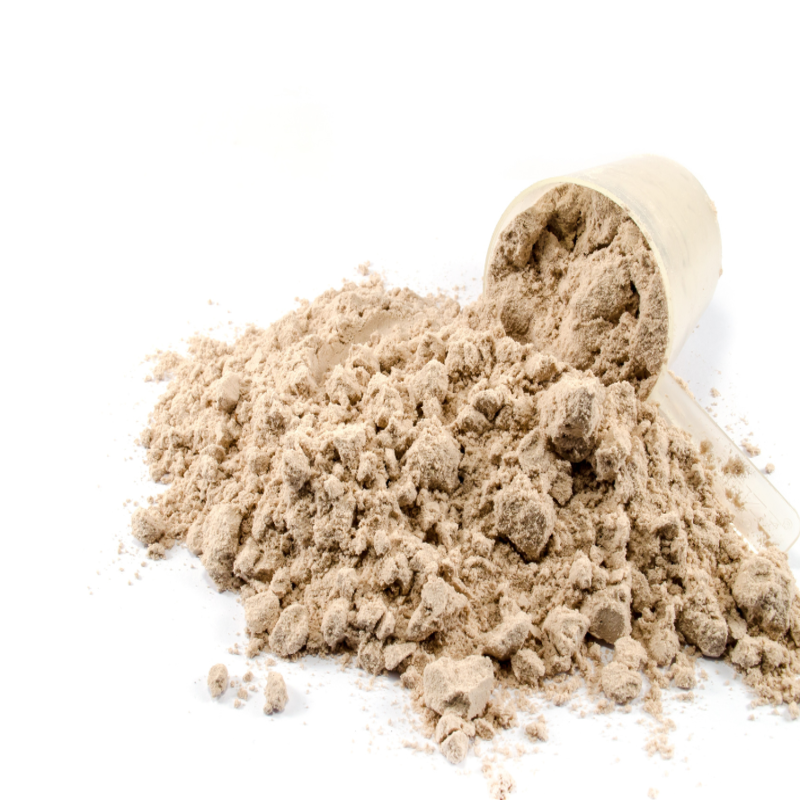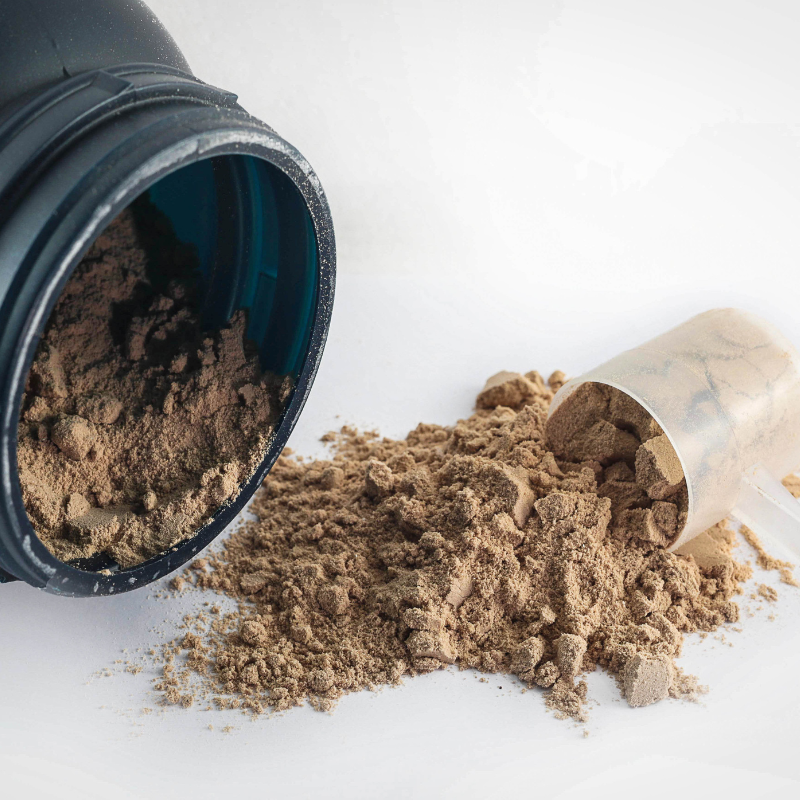How to Tell If Protein Powder Is Bad? The expiration date
Protein powders have become common supplements for fitness enthusiasts. However, protein supplements can have a limited shelf life. Hence, it’s essential to learn how to tell if protein powder is bad.
Understanding Protein Powder Shelf Life
What Is the Shelf Life of Protein Powder?
Every protein powder has a specific shelf life. Generally, most protein powders last about one to two years after their manufacturing date. The expiration date is usually printed on the packaging. This date gives a reasonable estimate of how long the product is expected to remain effective. However, many factors influence protein powder longevity. Factors such as storage conditions significantly affect how well the powder maintains its quality.
Factors Affecting Protein Powder Longevity
Storage conditions play a pivotal role in the shelf life of protein powder. Exposing the powder to heat, moisture, or direct sunlight can worsen its quality. High temperatures can cause the proteins to break down more quickly. Meanwhile, moisture can introduce harmful bacteria or mold. Therefore, it’s important to keep the powder in a cool, dry place.
Additionally, the method of sealing the container matters. If the bag or container is not sealed tightly, air exposure can degrade protein powder. This oxidation can negatively impact its taste and efficacy. As a result, you should always ensure the packaging is properly sealed. When these factors come into play, it might be a good idea to check the powder for signs of spoilage.

Signs of Spoiled Protein Powder
Visual Inspection: Color and Texture Changes
One of the first steps in determining if protein powder is bad involves visual inspection. Examine the color and texture of the powder. If you notice any discoloration or dark spots, this might indicate spoilage. The powder should maintain a consistent color, depending on the type. For example, whey protein is usually light tan, while plant-based powders can vary widely.
Moreover, look for any clumping or unusual graininess. These changes could indicate that moisture has compromised the powder. Clumps of powder may also suggest that bacteria are starting to grow. In such cases, it’s crucial to discard the product. Don’t take risks with your health; it’s better to be safe than sorry.
Lastly, check the container for any visible signs of mold. If you spot molds around the opening or on the powder itself, throw it away immediately. Consuming moldy protein powder can lead to serious health issues. Thus, always be vigilant about these visual signs to maintain a safe consumption experience.
Smell Test: Odd Odors
Another effective way to identify spoiled protein powder is through a smell test. When protein powder begins to go bad, it often develops a rancid or off-putting odor. Fresh protein powder should have a mild, pleasant scent. If you catch a whiff of something sour or rancid, that’s a warning sign.
Furthermore, certain types of protein powders may have a more distinct smell than others. For example, casein protein often has a dairy-like scent, while plant-based protein powders may have earthy or nutty notes. Any significant change in the expected scent can indicate spoilage. Therefore, trust your senses. If the smell seems off or unfamiliar, it’s best not to consume the product.
Using your sense of smell is a quick and easy way to assess protein powder quality. However, it should be done in tandem with visual inspections. The combination of both assessments provides a more comprehensive evaluation. Transitioning to different steps can help determine the safety of your protein supplement.
Taste Test: What to Watch For
Familiar Flavor vs. Off-Taste
If your protein powder passes the visual and smell tests, it might still be wise to do a small taste test. However, be cautious here. Take only a tiny amount first. Fresh protein powder should have a pleasant and recognizable flavor. Whey protein often has a creamy taste, while plant-based proteins can taste earthy or nutty.
If you experience a sour or rancid taste, discard the powder immediately. An off-flavor can be an indication that the protein has degraded or turned rancid. Consuming spoiled protein powder can lead to digestive distress or other health issues. Thus, ensure that the protein retains its original flavor profile.
Additionally, be aware of how the powder mixes with liquids. If the protein powder clumps or fails to dissolve properly, this could suggest spoilage. Fresh powder should mix well, providing a smooth texture. If it feels gritty or has an unusual mouthfeel, it’s time to consider getting rid of the product.
Aftertaste Effects
Moreover, pay attention to any aftertaste you experience. While most protein powders should leave you feeling satisfied, an unpleasant aftertaste may signify spoilage. This unusual aftertaste can be confirmed if the powder tastes fine initially but leaves an odd sensation afterward. Such experiences should not be ignored.
Furthermore, the presence of an unpleasant aftertaste can indicate rancidity. Rancid fats in the protein powder can lead to an unfavorable flavor that lingers. Therefore, trust your taste buds in evaluating the safety and quality of your protein supplement. Always conduct these tests before going back for another scoop. This will ensure that you are not consuming something that could harm your health.

Packaging Checks
Look for Signs of Damage
Carefully examining the packaging is vital when assessing protein powder. Damaged packaging can lead to spoilage. Check for tears, punctures, or holes that might allow air and moisture to enter. If you find any signs of damage, it is better to toss the product. When protein powder is exposed, it can quickly lose its quality.
In addition to physical damage, evaluate the storage state of the packaging. Containers that have warped lids or compromised seals can also affect the powder. If the seal is broken or doesn’t fit snugly, it’s best to discard it. Fresh protein powders require airtight seals to ensure product integrity.
Moreover, consider the durability of the container itself. Plastic containers can degrade over time, especially when subjected to heat or sunlight. If your protein powder is housed in a plastic container that shows signs of brittleness or discoloration, it could be time for a replacement. Always prioritize quality over quantity or cost when it comes to protein supplements.
Expiration Date: What to Look For
The expiration date is an essential factor in verifying protein powder quality. Always check this date before using your powder. While many products remain usable past their expiration date, their effectiveness may diminish. If your protein powder is close to or past the expiration date, consider replacing it.
Moreover, some manufacturers provide a “best by” date rather than a strict expiration date. This can sometimes be ambiguous. Even if the powder appears to be okay, it might not provide maximum nutritional benefits. Always follow your gut. If there are any doubts about the potency of older protein powder, it is safer to purchase a fresh supply.
Later on, it’s essential to note that different types of protein powders have varying shelf lives. For example, plant-based protein powders may not last as long as whey or casein powders. Always consider this when assessing your protein supplement. Ultimately, your health matters most.
Storage Tips to Extend Shelf Life
Best Practices for Storing Protein Powder
Proper storage of protein powder is essential for maintaining its integrity. Store protein powder in a cool, dry place away from heat sources. Avoid storing it in areas like above the stove or near windows where sunlight can harm the powder.
Additionally, consider utilizing an airtight container for your protein powder. A durable glass or hard plastic container helps protect the powder from moisture and air. This practice minimizes exposure to elements that can degrade its quality. Regularly sealing the container after each use helps preserve the powder.
Keep the protein powder away from humid environments. Areas with high humidity can introduce moisture, which may lead to mold growth. For those who live in consistently damp climates, consider refrigerating your protein powder. However, make sure it is in a sealed container. This precaution can help extend its shelf life significantly.
Checking Temperature Fluctuations
Temperature fluctuations can also impact protein powder quality. Avoid storing protein powder in places that experience extreme cold or heat. This can affect the proteins within. For optimal quality, maintain a consistent temperature.
Extreme temperatures can cause the protein powder to clump, adversely affecting its mixability. If the powder hardens or becomes difficult to scoop, discard it if it appears off. The changes can indicate spoilage due to improper storage conditions.
Always remain vigilant regarding temperature changes. Make adjustments as necessary to keep your protein supplements in peak condition. When in doubt, prioritize safety and quality over anything else.

Conclusion
Identifying spoiled protein powder might seem complex but can be simplified with careful observation. Use visual inspections to check for irregularities in color and texture. Next, utilize your sense of smell to detect any odd odors. If the powder smells alarming, it’s better to let it go.
Taste testing, although risky, can also provide insights into quality. Just remember to be cautious and avoid large samples. Pay attention to changes in flavor and aftertaste. Lastly, do not underestimate the importance of packaging checks. Ensure there are no signs of damage and that the expiration date is reasonable.
By following these steps and considering your protein powder’s storage conditions, you can extend its shelf life significantly. Use airtight containers and store them in cool, dry places to keep your supplements fresh. Ultimately, your health and well-being should always come first.
